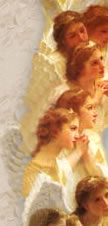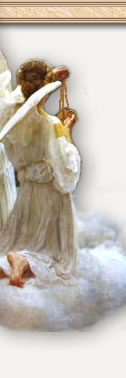




 |
|

|
|
|||||||||||
|
|
|
|
||||||||||||
 |
|
|
||||||||||||
 |
|
 |
|
|||||||||||
|
|
||||||||||||||
 |
 |
|
|
|
|
The Construction of the New Mass In my previous article, I attempted to expose a number of seeming contradictions in the decision-making process of the Consilium (the group of scholars commissioned by Paul VI to reform the liturgy). In this present article I will investigate other specific areas of the so-called “reform.” Recall that the Consilium purported to restore ancient practices which had, “by an accident of history” or other unknown reasons, fallen into disuse.1 Using the Consilium’s own fundamental principles of “substantial uniformity” and “legitimate progress,”2 a two-fold obstacle needed to be overcome by the Consilium’s reformers. In their evaluation of a legitimate restoration of formerly defunct rites, any restoration should have avoided fictitious liturgiology and made certain that neither meaning nor context was lost. The first rite to be restored by the Council (via the Consilium) was the so-called “Prayer of the Faithful.” Number 53 of Sacrosanctum Concilium relates that the Prayer of the Faithful is to be ‘restored,’ that is, brought back from the dead. According to the liturgical opinion at the time, this prayer was originally part of the ancient Roman Rite and had been lost. The first official publication on the Prayer of the Faithful De Oratione Communi seu Fidelium3 nicely sums up its “history” as it was widely accepted by liturgical scholars at the time of the Council. This document represents the first serious official attempt to demonstrate the Prayer of the Faithful’s existence in the Roman rite and begins with a reference to St. Justin Martyr. Justin is well known to have described the ancient Greek usage of largely non-Roman Christians living in Rome in the second century, which has very little to do with the Roman rite directly. However, the real problem is as follows: the modern Roman Rite is said to have been restored to the “Tradition of the Fathers”4 by the New Roman Missal, which period is none other than the time dating from the fourth to the seventh centuries.5 What does a second century practice have to do with the Roman Rite, since it did not begin to exist until around circa 380 A.D., beginning with the translation of the Mass into Latin and the sole use of the Roman Canon? The document does not concern itself with this point. The Consilium next appeals to the so-called Apostolic Tradition of Hippolytus of Rome. St. Hippolitus was formerly believed to have been the author of an ancient text of worship for the Church in Rome in the third century (The Apostolic Tradition). Fanatical devotion of liturgists during the Vatican II period to Hippolytus’ Apostolic Tradition could be considered as equivalent to the deference shown to pseudo-Denys the Areopagite by the medieval Church. Yet what is the most recent consensus on the value of this text in understanding the Roman rite? “[T]he Apostolic Tradition is not the typical and official liturgy of the Roman Church; rather, it is one example – in Greek – of the way some Roman Christians worshipped, even though it claims for itself normative and even ‘apostolic’ authority.”6 One could easily go on criticizing reliance on Hippolytus’ so-called Apostolic Tradition. He is almost certainly not the real author of the document attributed to his name, and even if he were, it is very likely that it reflects opinions during his period as a schismatic anti-pope, who was only reconciled in prison before suffering death as a martyr. The bias of the Vatican II era liturgical reformers toward Hippolytus would prevent them from considering that this could reflect a schismatic liturgy. Although the tide of scholarly opinion has turned against Hippolytus, the New Mass’ Eucharistic Prayer II7 (the historical and ecclesiological origins of which are now questioned) remains. The Consilium’s same official text attempts to appeal to the Fathers of the Church as unassailable evidence that the Prayer of the Faithful was located before the Offertory. At first glance, there would seem to be strong evidence in favor of the reformers when the document quotes Western Fathers like Augustine, Arnobius, and Ambrose (the Father of the Ambrosian Rite), in support of the Prayer. However, new research has demonstrated rather conclusively that these texts are ambiguous and that they could very well refer to intercessions within the Canon of the Mass. The most recent liturgical research (especially at St. Anselmo in Rome) reveals that, during the “Golden Age of the Fathers” in Rome, what the Consilum refers to as the Prayer of the Faithful was actually the intercessions made for the Pope, bishops, clergy, laity, the living and the dead at the Te igitur (the beginning of the Roman Canon). These intercessions remain in the Roman Canon to this day. Outside of Rome many are familiar that the local king was often mentioned in the Canon, and even other petitions. The latest developments rely on the clear words of Pope St. Innocent I where he writes that the nomina, or list of names, is to be said only after the gifts have already been offered so that the petitions are made “within the sacred mysteries.”8 This text, along with a host of other texts, is able to be reconciled with the accounts of Augustine, Ambrose, and others. The old interpretation of Jungmann (perhaps the most influential liturgist at the time of Vatican II) which argued for a separate Prayer of the Faithful is seemingly unable to be reconciled with that of St. Innocent and other accounts. Thus the most recent scholarship most convincingly leads to an unsavory position for the reformers: the re-introduction of the Prayer of the Faithful is based on a fictitious liturgical foundation.9 It is an historical aberration! According to the Consilium, however, Jungmann had more or less demonstrated the existence of this Prayer of the Faithful in the Roman Rite.10 Jungmann held the following: the sixth century Pope Gelasius introduced the Kyrie Eleison at the beginning of Mass. This was a series of petitions to which the faithful would answer, “Lord have Mercy.” Gelasius did not wish to retain the repetitive Prayer of the Faithful (located before the Offertory) and decided to eliminate it. Eventually the “Lord Have Mercies” were fixed to six invocations, and three “Christ Have Mercies” were spliced in the middle. Over time the Kyrie petitions dropped out of the litany and thus we have the Kyrie as found in the Missal of Pius V.11 This offers evidence for what I have previously labeled as “fictitious liturgiology,” yet the secretary of the Consilium called the Prayer of the Faithful “a precious stone that had been lost and then recovered in all its splendor.”12 Worth mentioning is the oddity of the appeals made by the Consilium to Eastern Fathers, as well as to the Visigothic and Gallican liturgies, in order to justify the present Prayer of the Faithful. Such references are puzzling because the former have nothing to do with the Roman Rite, and the Consilium generally viewed the latter as corrupting influences upon the original purity of the Roman Rite. The second “restored” rite is that of the Sign of Peace. The instructions for the New Roman Missal say: “Before they share in the same bread, the faithful implore peace and unity for the Church and for the whole human family and offer some sign of their love for each other.”13 This is a ritual which has a tripartite significance: (1) The faithful exchange a sign (2) for peace and unity in the Church and the human family (3) indicating love for one-another. Yet what is the reality in every Catholic Church in the world? (1) The faithful and non-Catholics always exchange the Sign of Peace within the new Mass. No document has forbidden, or even suggested, that this is erroneous. (2) The current sign is therefore one of greeting and welcoming, but does not imply in the least a spiritual peace between persons present. (3) If you consider love the same as being friendly, the third objective is attained. There is not any evidence that the peace offered is considered by the faithful as an agape. Hence there is no reticence in offering it to those in mortal sin, nor will an official document be found to order, or even suggest, that the state of grace is necessary for the exchange of agape/love/charity. I make these observations because supposedly the “sign of peace” is a “restored” rite from the “Tradition of the Fathers.” It must be said that the rite exists in all the liturgies of Christendom.14 The Apostolic Tradition, The Constitutions of the Twelve Apostles, Ordines Romani and countless Fathers bear unanimous witness to this practice. Its significance, however, is in the expression of communion. The exchange of peace could be given only by orthodox Catholics in good standing in the patristic Church. In fact, there were several different ranks within the Church itself. First were the pagans outside the Church. Not being baptized, they could not share in Christ’s peace. They could not even be admitted into the Church during the sacred mysteries (as in the Roman Missal of Pius V’s dismissal of the catechumens at the Creed, they would be forced to exit with the catechumens), so that they could not receive the peace. Secondly, the unbaptized catechumens were unable to exchange a “holy kiss” of peace in the Holy Spirit until the Easter vigil.15 In fact, they could not even pray with baptized Christians until they themselves were baptized.16 Next were the heretics and schismatics. Although baptized, they were denied Communion and the Sign of Christ’s peace since they were cut off from the bosom of the Church. They too would not be allowed to witness the sacred mysteries. Yet the list of personae non gratis does not stop there! Those having committed mortal sin were relegated to a closed–off place in the back of the church, or even outside of the building, and so too were always denied the Sign of Peace.17 In the Roman Rite, only after the completion of formal canonical Penance during Lent could they receive absolution on Holy Thursday in order to once again take their place with the congregation and so exchange the bond of communion and love which they had lost through the commission of mortal sin.18 This noble reality of communion and love is expressed in the new Roman Missal, but it is adulterated since its application does not take into account the historical context of the Sign of Peace. Nor has there been implemented a proper way to restore the ritual while retaining its rich significance. Lost are the days of the sixth century Roman Rite where everyone but baptized and grace-filled orthodox Catholics are herded out of the Church following the Mass of the Catechumens. Gone, too, are the patristic prohibitions of men and women sitting together in the congregation and only exchanging peace among their own gender (still practiced in Judaism and by some Orientals). These universal practices from at least the third to the eighth centuries are all intimately bound up with the kiss of peace, which is to be pure and holy. The so-called “restoration,” purported to have been accomplished by the Consilium, reintroduced only a handshake and a smile. This is a result of the “lack of context” being achieved on the part of the Consilium. Ultimately, it must be admitted frankly that the Sign of Peace in the Novus Ordo is a meaningless liturgical gesture. Sadly, the required conclusion is that little more than vestiges of the ancient practice of the Sign of Peace have been re-introduced into the new Mass. Invoking the criteria of Vatican II’s Sacrosanctum Concilium that supposedly guided the Consilium, if any rites have demonstrated themselves as “of little advantage” or as “accidents of history,” the Prayer of the Faithful and the Sign of Peace would more than qualify. Notes 1 See DOCUMENTS ON THE LITURGY 1963-1979, Conciliar, Papal and Curial Texts, International Commission on English in the Liturgy, The Liturgical Press, Collegeville 1982. DOL 1 (Sacrosanctam Concilium, n. 50). 2 BUGNINI, A. Reform of the Liturgy 1948-75, Collegeville, Minnesota. The Liturgical Press, 1990 (1st English edition. Trans. Matthew J. O’Connell), pp. 39-45. 3 Ibid., DOL 239, nos. 1-17. 4 INSTITUTIO GENERALIS EX EDITIONE TYPICA TERTIA CURA ET STUDIO CONGREGATIONIS DE CULTU DIVINO ET DISCIPLINA SACRAMENTORUM EXCERPTA, Libreria Editrice Vaticana, Citta’ del Vaticano 2000. General Instruction of the Roman Missal A.D. 2000, no. 9. 5 DIZIONARIO DEL CRISTIANESIMO, ed. Luigi Bogliolo. Sinopsis Iniziative Culturali, Roma 1992 (edzione italiana). p. 372. 6 Vogel, Cyril. Medieval Liturgy: An Introduction to the Sources. The Pastoral Press: Washington D.C., 1986, p. 33 (revised edition in English). 7 BUGNINI, A. Reform of the Liturgy 1948-1975, p. 456. 8 19 March 416: Innocent I, epistle to Decentius. (Critical text from Cabieà, R. (ed.), La tettre du pape Innocent Ier a De’centius de Gubbio (19mars 416). Louvain 1973, 22). “De nominibus vero recitandis antequam precem sacrdos faciat, atque eorum oblationes quorum nomina recitanda sunt sua oratione commendet quam superfluum sit, et ipse pro tua prudentia recognoscis, ut cuius hostiam necdum Deo offeras, eius ante nomen insinues, quamvis illi incognitum nihil sit. Prius ergo oblationes sunt commendandae, ac tunc eorum nomina quorum sunt edicenda, ut inter sacra mysteria nominentur, non inter alia quae ante praemittimus ut ipsis mysteriis viam futuris precibus aperiamus.” 9 See especially: Raffa, V., Liturgia eucaristica. Mistagogia della Messa: dalla storia e dalla teologia alla pastorale pratica, B.E.L. Subsidia 100, Roma 1998, pp. 305-309. 10 See DOCUMENTS ON THE LITURGY 1963-1979, Conciliar, Papal and Curial Texts, International Commission on English in the Liturgy, The Liturgical Press, Collegeville 1982. DOL 239, no. 1917. 11 JUNGMANN, JOSEPH, The Mass of the Roman Rite: its origins and development, 2 vol. New York, Benzinger Brothers, 1951 (1st English edition. Trans. Francis A. Brunner). vol. 1, p. 296. pp. 33-346. 12 BUGNINI, A. Reform of the Liturgy 1948-75, Collegeville, Minnesota. The Liturgical Press, 1990 (1st English edition. Trans. Matthew J. O’Connell). p.404. 13 INSTITUTIO GENERALIS EX EDITIONE TYPICA TERTIA CURA ET STUDIO CONGREGATIONIS DE CULTU DIVINO ET DISCIPLINA SACRAMENTORUM EXCERPTA, Libreria Editrice Vaticana, Citta’ del Vaticano 1975. General Instruction of the Roman Missal 27 March 1975, no. 56b, or, DOCUMENTS ON THE LITURGY, DOL 208, no. 1446. 14 JUNGMANN, JOSEPH, The Mass of the Roman Rite: its origins and development, vol. 1, p 328. 15 See Tradition Apostolica of the so-called Hippolytus. See also Constitutiones Apostolicae of the 4th cent. 16 16 SCIENTIA LITURGICA, Manuale di Liturgia, ed. professori del Pontificio Istituto Liturgico S. Anselmo, 5 vol., Piemme, Casale Monferrato 1998. Edizione Italiana. (vol 4, pp. 44-45). Available in English as the Handbook for Liturgical Studies published by Pueblo. 17 Ibid., vol 4, pp. 118-124. 18 Manuscript LIBER SACRAMENTORUM ROMANAE AECLESIAE ORDINIS ANNI CIRCULI (Cod. Vat. Reg. Lat. 316/Paris Bibl. Nat. 7193, 41/56) (SACRAMENTARIUM GELASIANUM), Rerum Ecclesiasticarum Documenta, cura Pontificii Athenaei Sancti Anselmi de Urbe Edita Moderante L.C. Mohlberg, Series Maior Fontes vol. 4, Casa Editrice Herder, Roma 1960. Capitulum [XXXVIII], # 339-63 (Latin only).
|
|



♦ About The Mass ♦ Resources ♦ How To Help ♦ Contact Us ♦